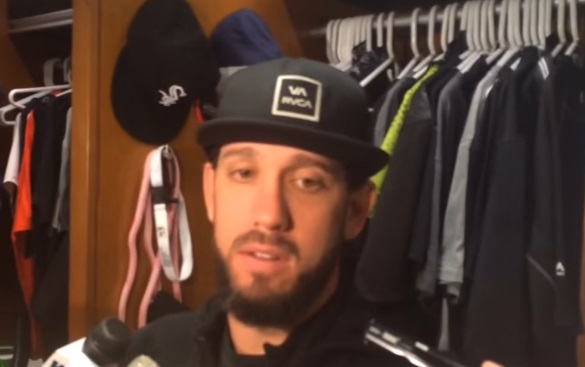
There was a time, before Yoan Moncada and Avisail Garcia’s ascension, when White Sox fans began to grow accustomed to seeing their front office herd in masses of veteran, broken-down, half-solutions to their rapidly decaying roster issues. Those days are now in the South Side’s rear view mirror, but some of these players still reside in the wake of those troubling times.
James Shields was one of the last to arrive in a group of misfits that the White Sox hoped to polish up, throw some pinstripes on, and wish for the best. And it worked out the way the parade of others had in the past — it simply didn’t.
Brought aboard in June of 2016, Shields was coming off a questionable run with the San Diego Padres after posting an ERA of 4.28. White Sox fans figured all he needed was to let Don Cooper get a hold of him and perhaps Shields would turn back into the player he was just a few years prior.
Shields, however, went on to post a 6.77 ERA in 114 innings for the remainder of the 2016 season and the start of 2017 didn’t look much better. Shields looked as though he was simply becoming another liability on an ailing team searching for answers. He recorded just 36 innings in the first half to the tune of a 4.95 ERA and had a strikeout rate just above 18 percent.
But let’s fast forward to August. Shields suddenly looked different than he had before. He threw 625 combined strikes in August and September and was garnering strikeout rates of nearly 25 percent — totals he hadn’t seen while in a White Sox uniform.
Shields also was going deeper in games, throwing over twice as many innings in two months as he had in the first half of the season (80 IP vs. 36 IP). His ERA was back below 4 in September for the first time since April, and he was allowing the lowest offensive totals he had all season.
And it all started in Boston. During an August 4th start at Fenway Park, mid-game, Shields dropped his arm slot on his delivery by nearly two feet, what some would consider drastic for a mid-game change. And he never looked back.
“I don’t know how many quality starts he’s had now since he’s made his adjustment,” Manager Rick Renteria said. He’s been keeping us in the ballgame, attacking the strike zone, he’s got that action that’s coming from a little lower arm slot now. He’s running balls to both sides of the plate, changing speeds and just doing a really nice job.”
Take a look at Shields’ vertical release point over the course of the season:

It’s not hard to notice Shields’ arm slot drop, and its correlation with his second half success.
“I’m revamping every year man,” Shields said about his mechanical change. “This being my 12th season, you’re always trying to refine your game every year, no matter what, whether it’s a pitch or mechanical adjustment. The league makes adjustments on you … at the end of the day, you always have to make adjustments.”
“It’s more than alteration, it’s a change,” bullpen coach Curt Hasler told reporters. “And this is him doing it. It impressed the heck out of me when he did it mid-game in Boston. This guy has got tremendous feel so he can do that. The result he has gotten is more balls down, more ground balls, less balls in the air, more outs on the infield, higher strike to ball ratio. All those things have been a result of this change he’s been able to do.”
For the White Sox, this adjustment couldn’t have come at a better time. There are holes in this team’s rotation looking ahead to 2018. Veteran arm Mike Pelfrey is now a free agent. Miguel Gonzalez was traded to Texas during the season. The White Sox are transitioning fresh young arms to the major league stage of their development — a transition that often includes a heavier workload. This team will need cost effective, veteran guys who can bare the brunt of those heavy workloads and eat up the innings that young pitchers, as well as pitchers such as Carlos Rodon coming off rehab, won’t comfortably be able to.
Enter Shields, who saw an uptick not only in his strikeout numbers, but in his longevity. After the Boston game, Shields began to average six to seven innings per outing again, going just two outings the rest of the season that were under six innings.
Shields has one year left on his contract, with an option for him to return in 2019 at the cost of $16 million. Depending on Shields progression, as well as the state of the 2019 White Sox, Shields’ return could be a welcomed opportunity in the future.
“I’ll make some assessments in the offseason,” Shields said. “See how that works out, see how my body is feeling. Over the last month and a half, it seems to be working out. we’ll see how it goes.”
The White Sox may have continued to typecast down-on-their-luck veterans to no avail in the past, but perhaps one of the remaining few players from those deals turned into a bit of undiscovered treasure for the South Sides, and one with impeccable timing.










